Get ready to discover the enchanting Isle of Skye – a hotspot for wanderlust seekers worldwide. Skye isn’t just another pretty island – it’s a superstar, hailed by Conde Nast and National Geographic as one of Europe’s and the world’s greatest gems. And why’s that? Well, Skye’s got that magic touch with its unspoiled natural treasures and jaw-dropping panoramas that’ll leave you speechless.
Looking for some epic adventures? Dive into our handpicked list of must-do activities on Skye and get ready to be blown away. From hiking majestic peaks to exploring charming villages, there’s no shortage of excitement here. Let Skye work its spell on you.
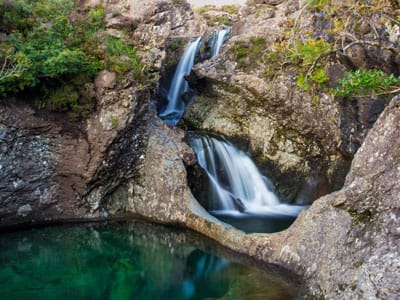
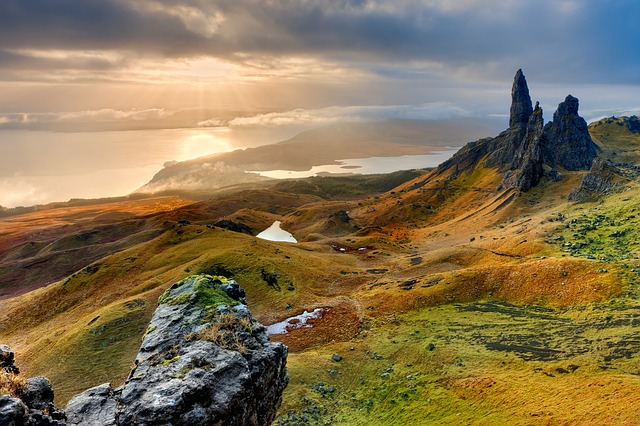
The Quiraing is an iconic hike along the Isle of Skye’s Trotternish peninsula. Gloriously unique, the 4.5 mile loop is made up of
Show More +Less -The Quiraing is an iconic hike along the Isle of Skye’s Trotternish peninsula. Gloriously unique, the 4.5 mile loop is made up of huge jagged pinnacles, sunken lakes and rocky mountains; rewarding you with panoramic views across lochs, mountains and out to sea. The changing light casting over the angles of the surrounding mountains and the vibrant colours of the Scottish highlands will leave you with memories for a lifetime.

Ok, the dancing is optional. If you’re visiting the Isle of Skye, you can’t miss the Fairy Pools.
Show More +Less -Ok, the dancing is optional. If you’re visiting the Isle of Skye, you can’t miss the Fairy Pools. The Fairy Pools are beautiful rock pools of crystal clear spring water fed by a series of waterfalls. Free to visit at any time, the spectacular Fairy Pools are located near the village of Carbost in Glenbrittle on the Isle of Skye.
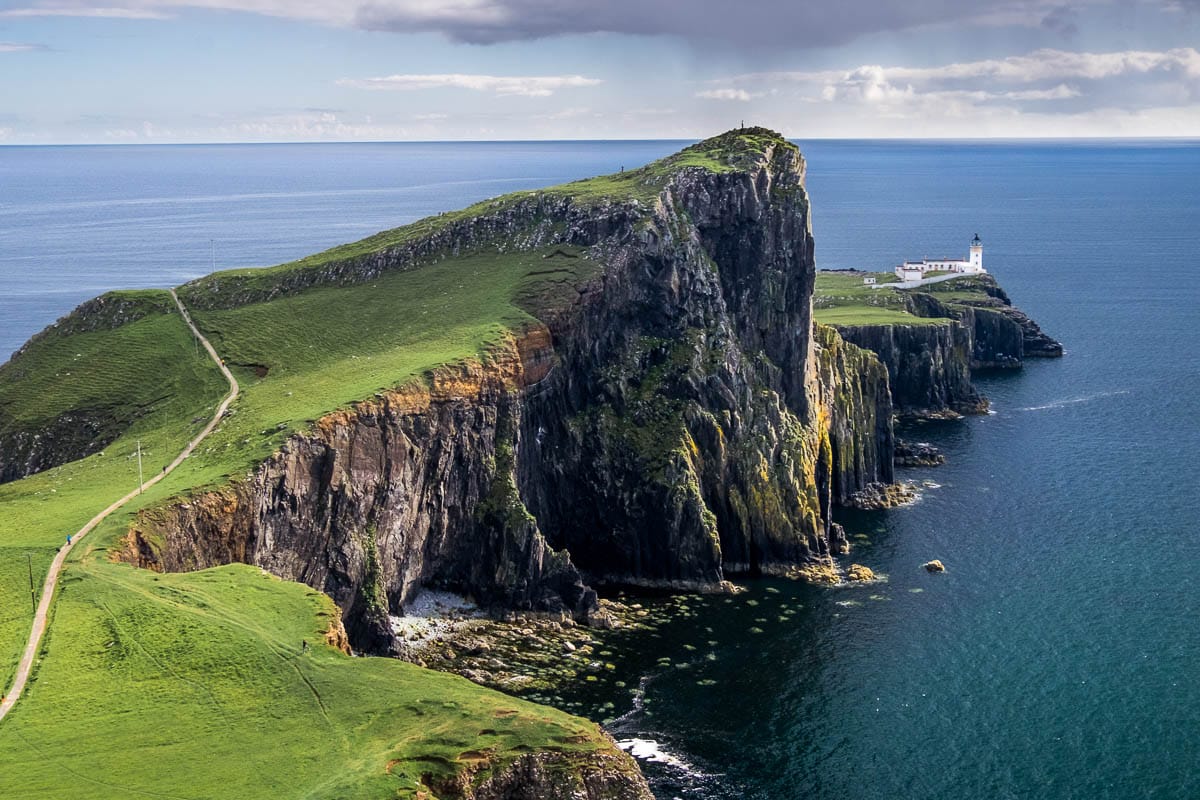
Neist Point is one of the most famous attractions in Skye. Located on the most Westerly point of Skye,
Show More +Less -Neist Point is one of the most famous attractions in Skye. Located on the most Westerly point of Skye, Neist Point stretches out into the sea with a powerful 480,000 candle powered lighthouse on the tip. Massive cliffs ring the coast here, and it’s a wonderful photography spot with the sheer cliffs & birdlife a plenty. One of the best place in the world to watch the sunset.
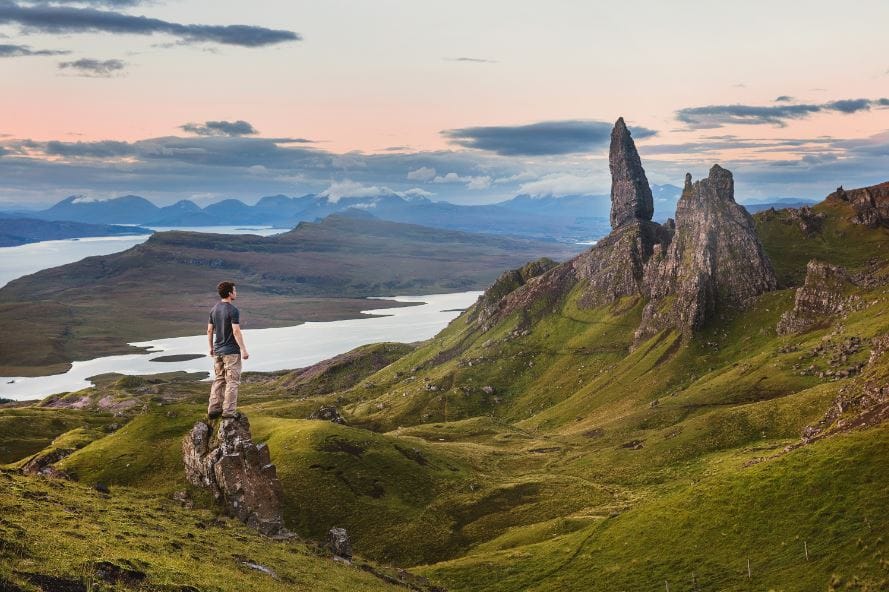
The Old Man of Storr is a signature sight not only in Skye, but it’s one of the top walks in Scotland.
Show More +Less -The Old Man of Storr is a signature sight not only in Skye, but it’s one of the top walks in Scotland. Situated in the north of the Isle of Skye in the Trotternish area, The ‘Old Man’ is just one element in an array of fantastic rock features that jut high into the sky from the hilly land. The views out over the Sound of Raasay and to the mainland are work the hike.
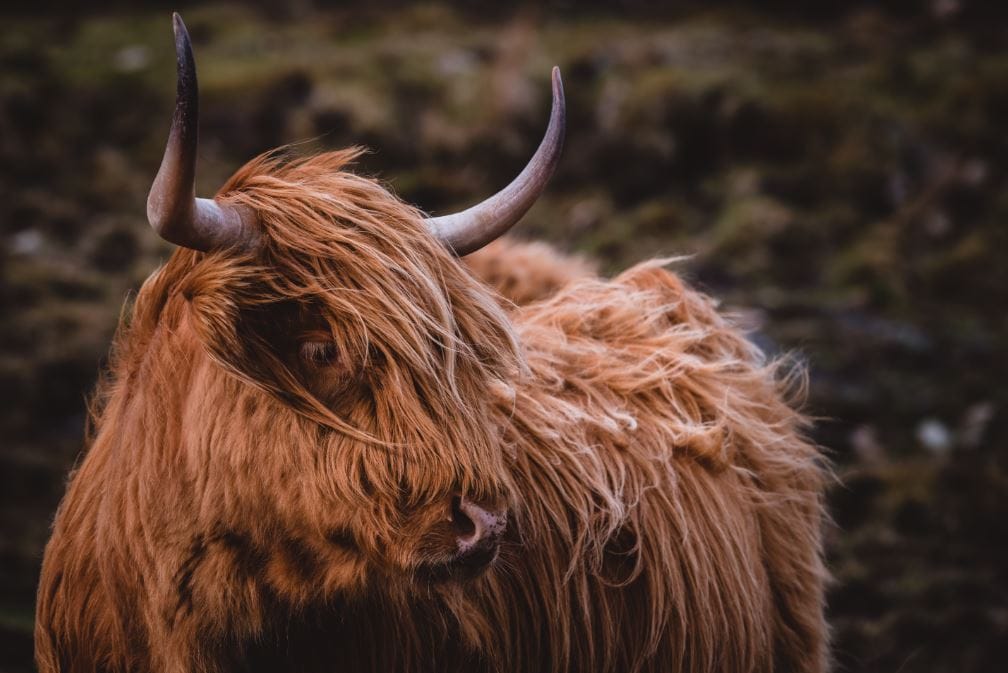
There are many icons of Scotland. Thistle, bagpipes, tartan, shortbread and of course Highland cow, often referred to as the ‘Hairy Coo’.
Show More +Less -There are many icons of Scotland. Thistle, bagpipes, tartan, shortbread and of course Highland cow, often referred to as the ‘Hairy Coo’. In the interest of full disclosure, Highland cows aren’t as common on the Isle of Skye as you may think. For many of our guests seeing a ‘highland coo’ is on their bucket list so…
A great place to stop on route to The Isle of Skye is the Highland village of Duirinish that has a herd of Highland cows wandering the village.
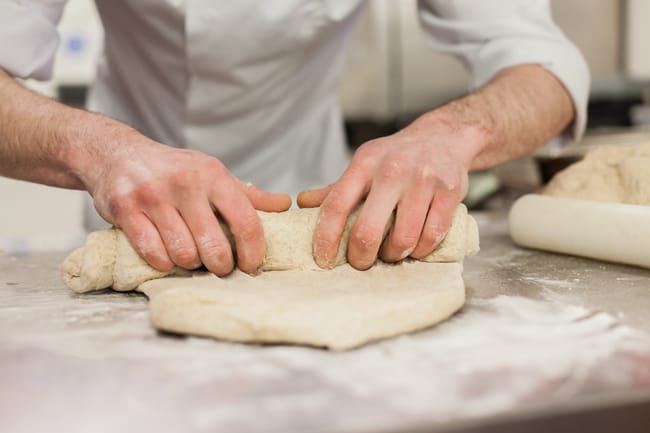
Dulse is a type of Scottish seaweed and Brose is a Scots word for porridge. Our Dulse & Brose bread and butter have become a famous local delight.
Show More +Less -If you are on a foodie tour of The Isle of Skye add this to your list.
Dulse is a type of Scottish seaweed and Brose is a Scots word for porridge. Our Dulse & Brose bread and butter have become a famous local delight.
Dulse has been eaten for over one thousand years in North-Western Europe. The ancient Celtic warriors of old ate dulse as they were marching and, during the seventeenth century, British sailors ate it to prevent scurvy.
As the glaciers receded after the Ice Age, the land we now know as Scotland became the habitat of small groups of hunter-gatherers who settled there by 4000 BC. The bounty of the sea would have been essential to the success of these people, and seaweed would have been an easily gathered and abundant food source.
It is not until around 600 AD however, that we have a definite written record of seaweed used in a poem attributed to St. Columba himself. In this, there is a reference to the monks of Iona collecting dulse (Palmaria palmata) from the rocks.
Rich in minerals and vitamins, dulse has been part of the staple diet of crofters throughout the North West coast. It is often eaten with oatmeal in a thick broth or simply boiled and served with butter as a separate dish.
Brose is a Scots word for an uncooked form of porridge. Oatmeal and/or other cereals are mixed with boiling water and allowed to stand for a short time. It is then served with salt, butter, milk or buttermilk. Another version of brose is called crowdie which is made with ground oats and cold water, although that term is more often used for a type of cheese.
In the 16th century, shepherds carried with them a mixture of oatmeal and water. Brose resulted from the agitation of the mixture as they climbed the hills. In addition to oats, brose can be made with other types of cereals such as barley, peasemeal or a mixture of different grains. Other ingredients, such as nettle tops, kale and swede may also be added to the basic brose dish.
Both dulse and brose are natural, nutritious Scottish ingredients that symbolise the tradition and accessibility of our restaurant Dulse and Brose. The perfect blend of fantastic foodie fare with local ingredients and an environment that makes you feel welcomed and relaxed.
Book your table at our restaurant Dulse & Brose, browse the menu and enjoy the flavours of two of Scotland finest ingredients.